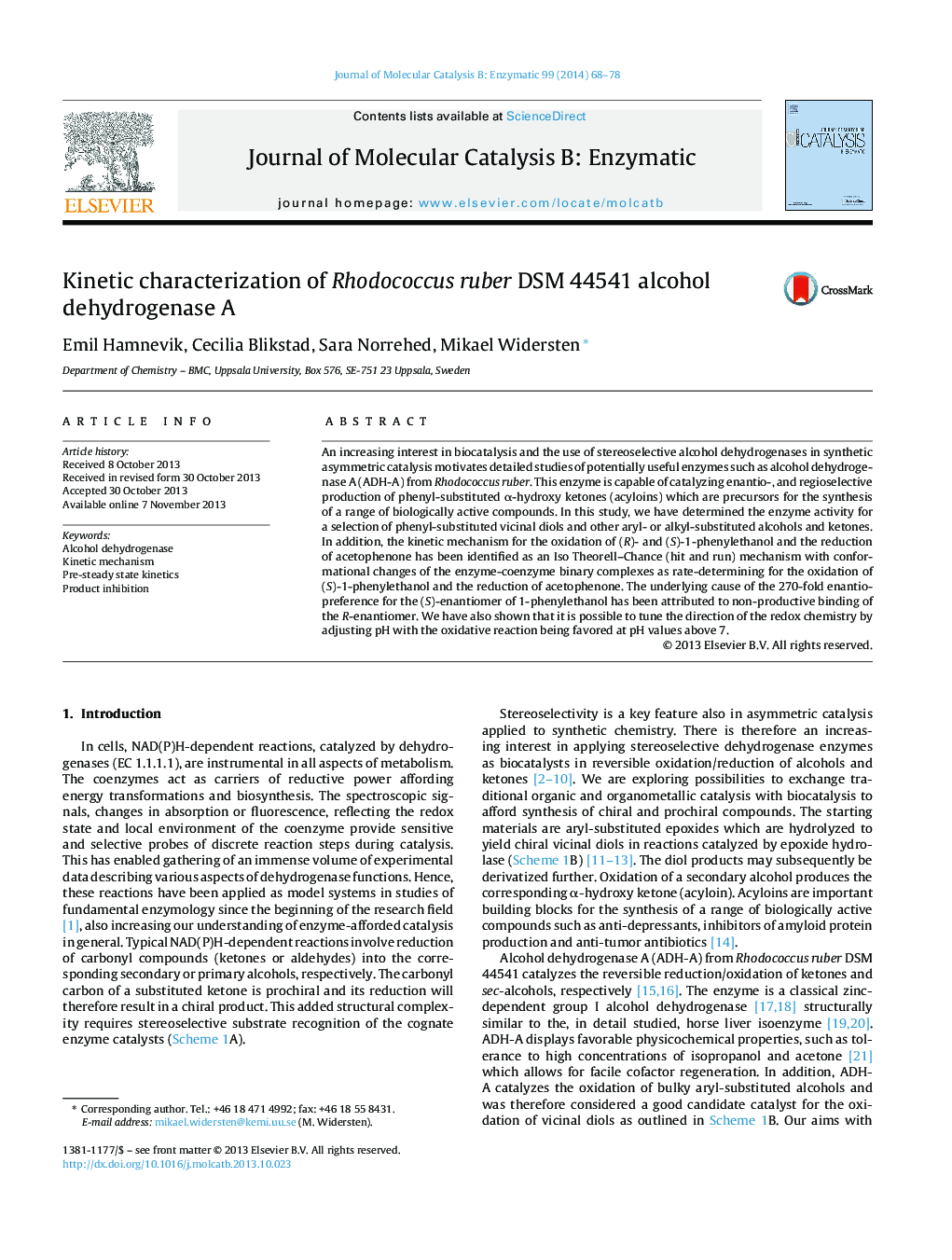| Article ID | Journal | Published Year | Pages | File Type |
|---|---|---|---|---|
| 69743 | Journal of Molecular Catalysis B: Enzymatic | 2014 | 11 Pages |
•The kinetic mechanism of Rhodococcus ruber ADH-A has been fully mapped.•The product inhibition pattern displays pH-dependence.•Conformational changes of enzyme-coenzyme complexes are rate-determining.•Enantioselectivity of ADH-A depends on non-productive binding of the less-preferred substrate.
An increasing interest in biocatalysis and the use of stereoselective alcohol dehydrogenases in synthetic asymmetric catalysis motivates detailed studies of potentially useful enzymes such as alcohol dehydrogenase A (ADH-A) from Rhodococcus ruber. This enzyme is capable of catalyzing enantio-, and regioselective production of phenyl-substituted α-hydroxy ketones (acyloins) which are precursors for the synthesis of a range of biologically active compounds. In this study, we have determined the enzyme activity for a selection of phenyl-substituted vicinal diols and other aryl- or alkyl-substituted alcohols and ketones. In addition, the kinetic mechanism for the oxidation of (R)- and (S)-1-phenylethanol and the reduction of acetophenone has been identified as an Iso Theorell–Chance (hit and run) mechanism with conformational changes of the enzyme-coenzyme binary complexes as rate-determining for the oxidation of (S)-1-phenylethanol and the reduction of acetophenone. The underlying cause of the 270-fold enantiopreference for the (S)-enantiomer of 1-phenylethanol has been attributed to non-productive binding of the R-enantiomer. We have also shown that it is possible to tune the direction of the redox chemistry by adjusting pH with the oxidative reaction being favored at pH values above 7.
Graphical abstractFigure optionsDownload full-size imageDownload as PowerPoint slide
